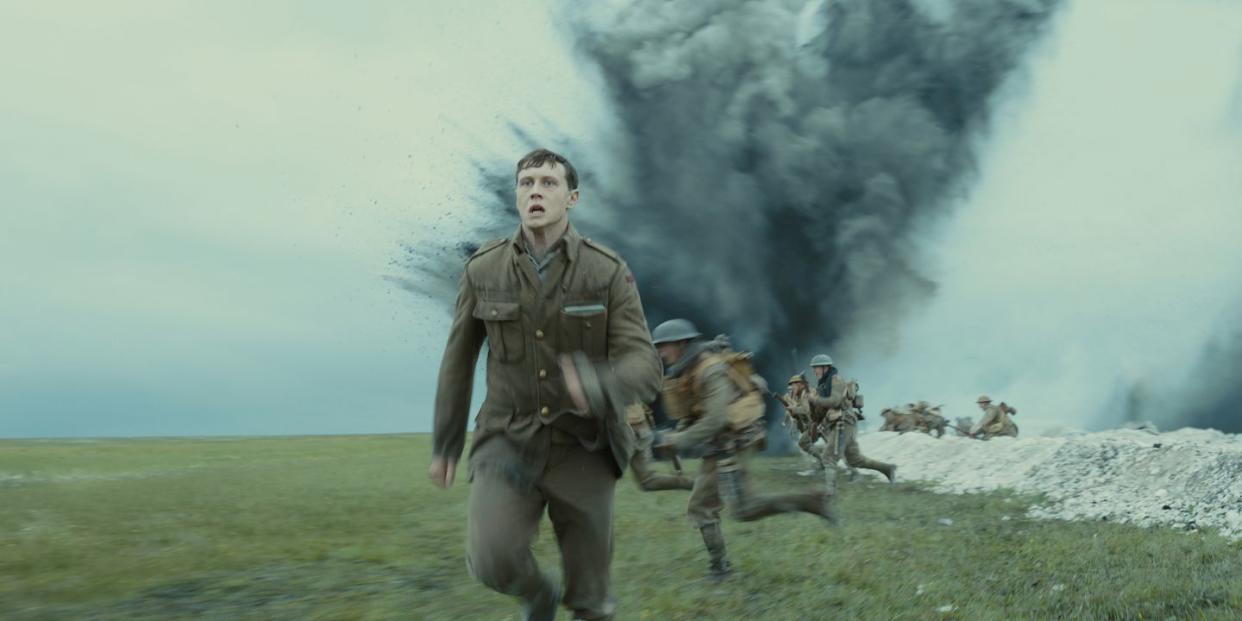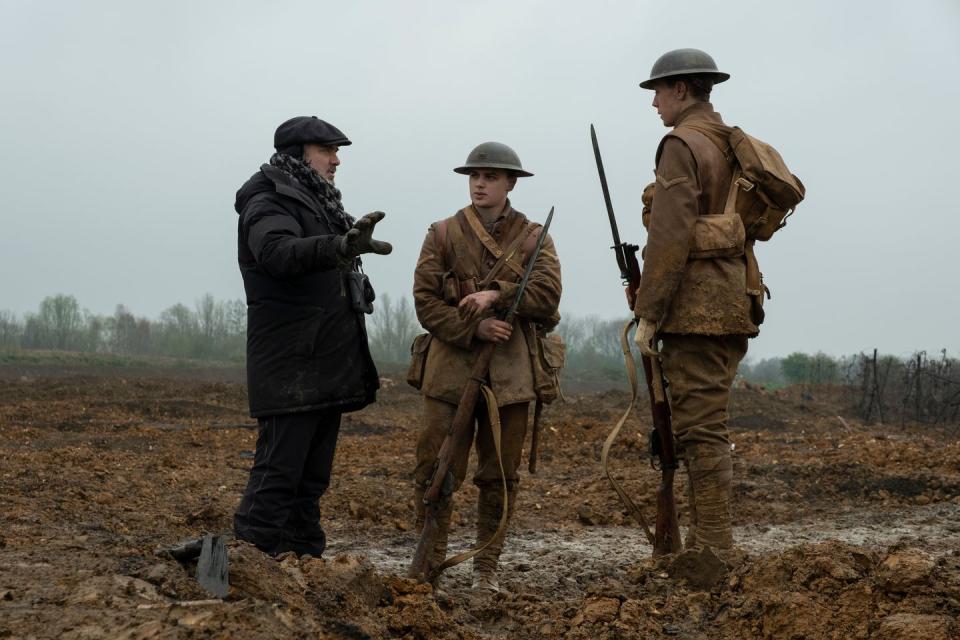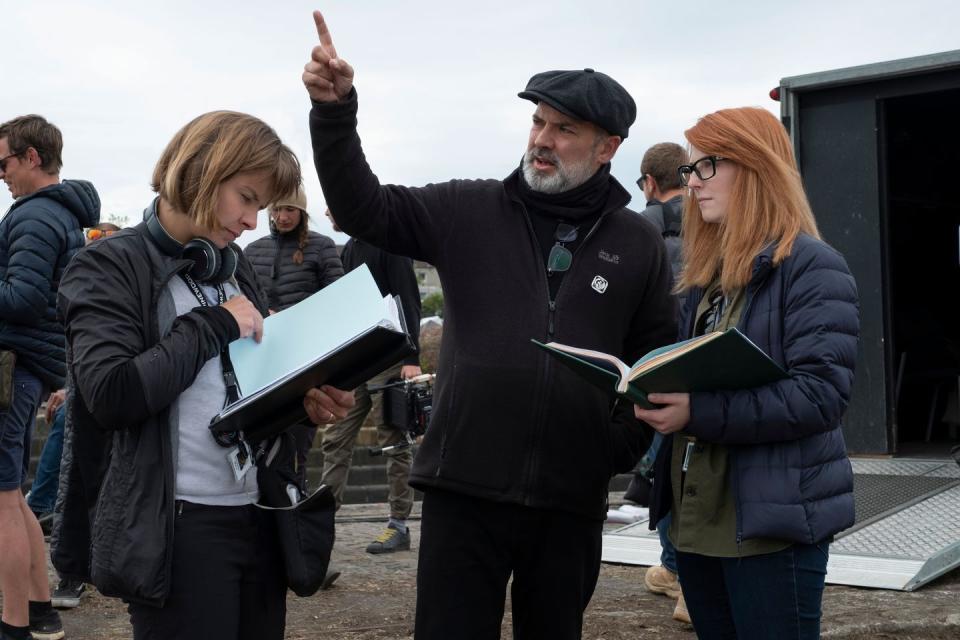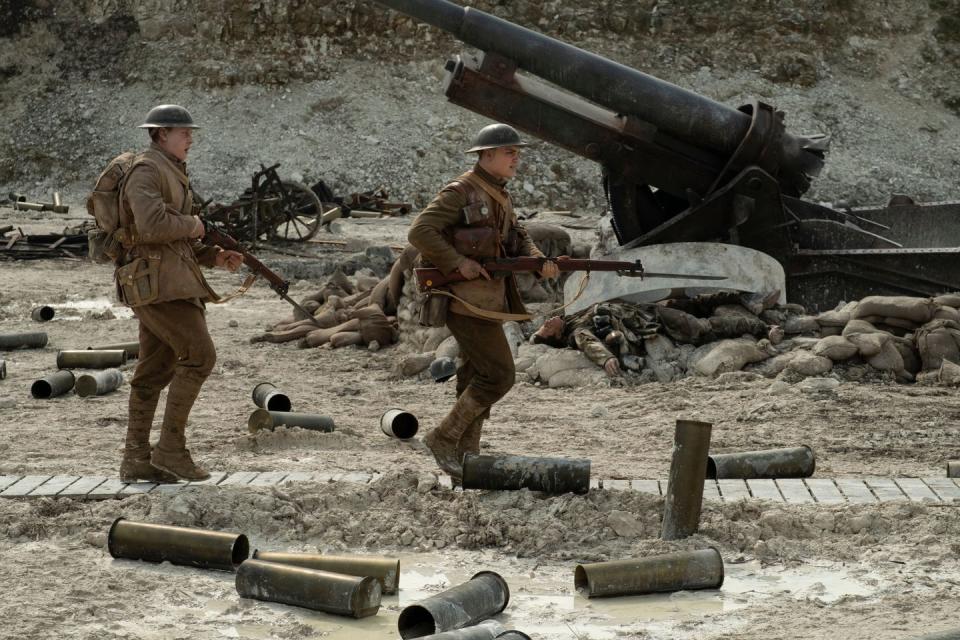All About the Real-Life Story Behind Oscar-Nominated War Movie '1917'

Warning: 1917 spoilers ahead.
War films have long been a go-to genre for Hollywood, exploring everything from battles in the Civil War (Glory, Dances With Wolves) to World War II (Dunkirk, Saving Private Ryan). Of course, World War I has been captured in cinematic history, but never as director Sam Mendes did for 1917. Nominated for 10 Academy Awards at this year's Oscars, the movie is filmed to look like one continuous shot. Though movie magic made this approach possible, many have wondered if the plot itself was based in reality. Ahead of the Academy Awards, where 1917 could pick up trophies in both the Best Picture and Best Director categories, read up on the real-life inspiration for the harrowing war epic.
The Film
1917 follows a day in combat for lance corporal soldiers Schofield (George MacKay) and Blake (Dean-Charles Chapman), who are tasked by General Erinmore (Colin Firth) with a dangerous mission. They must deliver a handwritten note to Colonel Mackenzie (Benedict Cumberbatch), which orders him to cease a planned attack on Germans who have retreated to the Hindenburg line in North France. Blake's brother is a part of the fleet that must be notified before it's too late. In order to complete the fateful task, Blake and Schofield must survive unbearable conditions, which include escaping the trenches and no man's land alive.

The Man Behind the Film
Mendes, who directed films including American Beauty, Skyfall, and Revolutionary Road, was inspired to make a World War I film by his paternal grandfather, Alfred Mendes. Alfred is a World War I veteran and author, whose vivid storytelling marked Mendes' childhood. He told Variety in March, “I had a story that was a fragment told to me by my grandfather, who fought in the First World War. It’s the story of a messenger who has a message to carry. And that’s all I can say. It lodged with me as a child, this story or this fragment, and obviously, I’ve enlarged it and changed it significantly. But it has that at its core.”
Mendes told Deadline that some of his grandfather's "behavioral tics" in the years after the war influenced his decision to explore the mental impact of warfare in 1917. While neither Blake nor Schofield is an exact representation of his grandfather's experiences, Mendes told Deadline that the essence of a young soldier with a message to deliver was reminiscent of Alfred's tales. “He was very young, and small and very fast," Mendes explained. "He was given the job of carrying messages on the Western front…the spirit of what he told me and the central idea of a man carrying a message wouldn’t leave me. It just clung on in there somehow, for the last 50 years.”

The Real Events
The events Schofield and Blake endured are based on real-life occurrences. The story takes place on April 6, the same day the United States formally entered the war, though that landmark holds no bearing on the mission at the center of 1917.
During this period, the Germans launched Operation Alberich near the Hindenburg Line. Mendes explained the historical context for the plot—and the film's dire setting—during an interview with Vanity Fair:
“It is set in northern France during the spring of 1917, just at the point the Germans had retreated to the newly built and massively fortified Hindenburg Line. The British troops woke up one morning to find that the Germans had simply disappeared. There was a period of terrified uncertainty—had they surrendered, withdrawn, or were they lying in wait? It is across this mostly abandoned and shattered landscape that our two men have to journey. The Germans had destroyed anything of value—burnt down the towns, taken most of the civilians, chopped down the trees, and they had left behind booby traps, snipers, and a few other unexpected surprises.”

According to Smithsonian Magazine, the movie's main planned attack could've been modeled on The Battle of Poelcappelle, which took place in Belgium in 1917 during the Third Battle of Ypres. The outlet explains that this battle was part of a campaign that was meant to provide "misleading information" to enemy forces.
You Might Also Like

